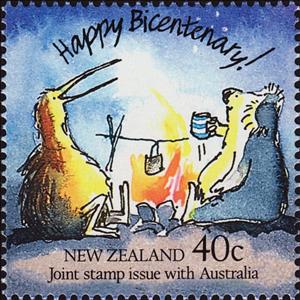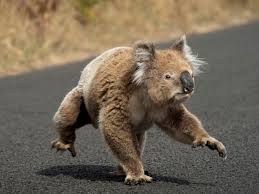Stamp: Happy Bicentenary (New Zealand 1988)
Happy Bicentenary (New Zealand 1988)
21 June (New Zealand ) within release Australia 200th goes into circulation Stamp Happy Bicentenary face value 40 New Zealand cent
| Stamp Happy Bicentenary in catalogues | |
|---|---|
| Stanley Gibbons: | Sg:NZ 1474 |
Stamp is square format.
|
Data entry completed
83%
|
|
|---|---|
| Stamp Happy Bicentenary in digits | |
| Country: | New Zealand |
| Date: | 1988-06-21 |
| Size: | 35 x 35 |
| Perforation: | comb 14½ |
| Format: | Stamp |
| Face Value: | 40 New Zealand cent |
Stamp Happy Bicentenary it reflects the thematic directions:
Birds (Aves), a subgroup of Reptiles, are the last living examples of Dinosaurs. They are a group of endothermic vertebrates, characterised by feathers, toothless beaked jaws, the laying of hard-shelled eggs, a high metabolic rate, a four-chambered heart, and a strong yet lightweight skeleton. Birds live worldwide and range in size from the 5 cm (2 in) bee hummingbird to the 2.75 m (9 ft) ostrich. They rank as the class of tetrapods with the most living species, at approximately ten thousand, with more than half of these being passerines, sometimes known as perching birds. Birds are the closest living relatives of crocodilians.
The koala (Phascolarctos cinereus), sometimes called the koala bear, is an arboreal herbivorous marsupial native to Australia. It is the only extant representative of the family Phascolarctidae and its closest living relatives are the wombats. The koala is found in coastal areas of the mainland's eastern and southern regions, inhabiting Queensland, New South Wales, Victoria, and South Australia. It is easily recognisable by its stout, tailless body and large head with round, fluffy ears and large, dark nose. The koala has a body length of 60–85 cm (24–33 in) and weighs 4–15 kg (9–33 lb). Fur colour ranges from silver grey to chocolate brown. Koalas from the northern populations are typically smaller and lighter in colour than their counterparts further south. These populations possibly are separate subspecies, but this is disputed.



